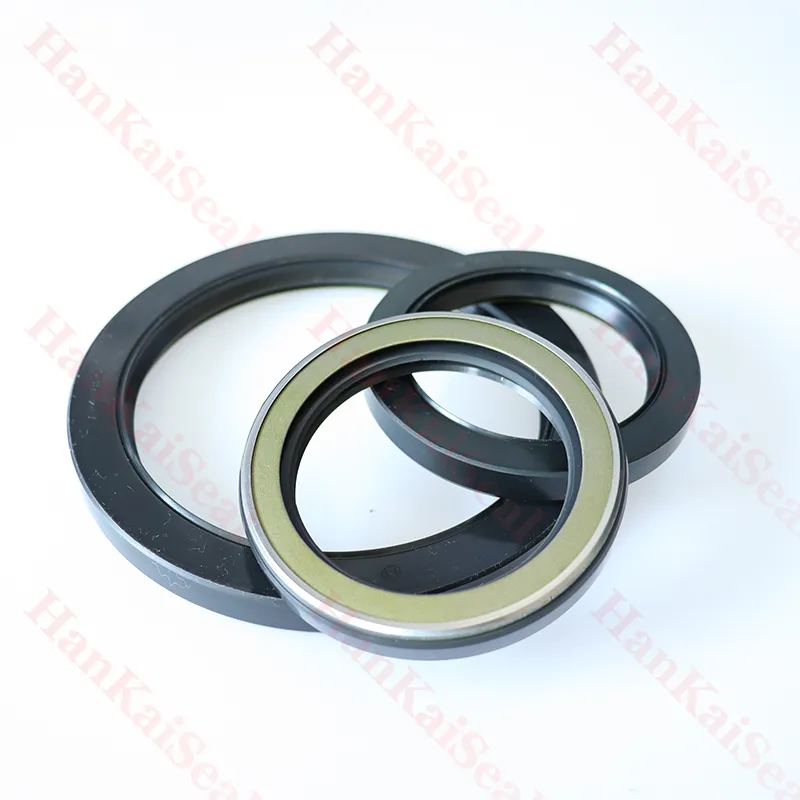Oct . 06, 2024 09:25 Back to list
oil seal for motor
Understanding Oil Seals for Motors
Oil seals play a crucial role in the operation of various motor-driven systems, serving as a barrier to prevent the leakage of lubricants and contaminants from entering sensitive components. These seals are integral in ensuring optimal performance and longevity of motors, whether in vehicles, industrial machinery, or household appliances. This article will explore the importance, types, applications, and maintenance of oil seals for motors.
What is an Oil Seal?
An oil seal, also known as a dust seal, is a mechanical seal that fits into a housing or a bore to prevent the escape of lubricating oil and to keep dirt and moisture from entering the machinery. Oil seals are typically made from durable materials such as rubber, silicone, or polyurethane, designed to withstand a range of temperatures and pressures. The design incorporates a lip that applies pressure against the shaft, ensuring that oil remains contained within the system while minimizing the chances of contaminants entering.
Importance of Oil Seals
1. Leak Prevention One of the primary functions of oil seals is to prevent the leakage of lubricants. In motor operations, loss of oil can lead to insufficient lubrication, causing wear and tear on internal components, which can ultimately lead to failure.
2. Contaminant Protection Oil seals also protect the motor from external contaminants such as dirt, dust, and moisture. These substances can cause significant damage to bearings and other internal components, resulting in reduced operational efficiency.
3. Operational Efficiency By maintaining proper lubricant levels and preventing the entry of harmful particles, oil seals help ensure that motors operate at optimal efficiency. This can lead to lower energy consumption and improved overall performance.
4. Longevity of Equipment Well-functioning oil seals contribute to the overall lifespan of motors. They help prevent premature failures and reduce the frequency of maintenance and repair, providing a significant cost advantage over time.
Types of Oil Seals
There are various types of oil seals designed for specific applications. Common types include
oil seal for motor

- Single Lip Oil Seals These seals have one sealing lip and are widely used in applications where low pressure is involved. - Double Lip Oil Seals Featuring two lips, these seals provide enhanced protection against contaminants and are often used in more demanding environments. - V-Rings These seals create a barrier around rotating shafts, preventing the ingress of dirt and moisture while retaining lubricants.
- Labyrinth Seals Unlike traditional lip seals, labyrinth seals do not make direct contact with rotating shafts. Instead, they use a series of grooves and ridges to create a tortuous path for contaminants, offering a high level of protection.
Applications of Oil Seals
Oil seals are found in a wide range of applications across various industries
- Automotive In vehicles, oil seals are used in engines, transmissions, and differentials to ensure that oils remain contained and free from contaminants. - Industrial Equipment Manufacturing machines and pumps use oil seals to maintain lubricant integrity and protect sensitive components from dirt and moisture. - Household Appliances Many home devices, such as washing machines and HVAC systems, utilize oil seals to enhance performance and longevity.
Maintenance and Replacement
To ensure optimal performance of oil seals, regular maintenance checks are necessary. Inspection for signs of wear, such as cracking or deformation, can prevent unexpected failures. If any signs of oil leakage or contamination are detected, it is essential to replace the oil seal promptly.
When replacing an oil seal, it is crucial to use a seal that matches the specifications of the original to ensure compatibility and maintain the performance level of the motor. Proper installation techniques, such as using the correct tools and applying the right amount of force, can further enhance the effectiveness and lifespan of the oil seal.
Conclusion
Oil seals are vital components in motor applications, providing essential functions in leakage prevention and contamination protection. By understanding their importance, types, applications, and maintenance considerations, users can ensure their motors operate efficiently and effectively, ultimately leading to enhanced performance and longevity of equipment. Regular upkeep and prompt replacement of oil seals can prevent costly repairs and downtime, making them a fundamental aspect of motor management.
-
TCN Oil Seal Metal Ring Reinforcement for Heavy Machinery
NewsJul.25,2025
-
Rotary Lip Seal Spring-Loaded Design for High-Speed Applications
NewsJul.25,2025
-
Hydraulic Cylinder Seals Polyurethane Material for High-Impact Jobs
NewsJul.25,2025
-
High Pressure Oil Seal Polyurethane Coating Wear Resistance
NewsJul.25,2025
-
Dust Proof Seal Double Lip Design for Construction Equipment
NewsJul.25,2025
-
Hub Seal Polyurethane Wear Resistance in Agricultural Vehicles
NewsJul.25,2025
-
The Trans-formative Journey of Wheel Hub Oil Seals
NewsJun.06,2025
Products categories
















